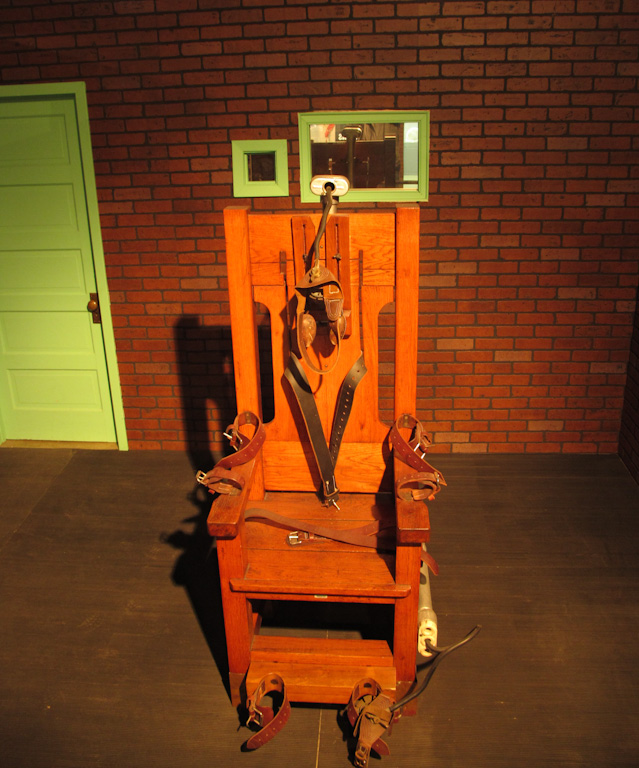Written by Randy Fielder for The Nevada Independent
Who gets the death penalty? The answer is not, as many suppose, every murderer. The Supreme Court decided in 1976 that murder, by itself, is not enough to warrant the death penalty. But also consider: Between 2000 and 2012 in Clark and Washoe Counties, there were 1,256 murder cases; only twenty-three received a death sentence. Sentencing all of those murderers to death would make Nevada, already one of the largest per capita death rows, the actual largest death row in the country.
If not every murderer gets the death penalty, how do we choose those who do? And, how do we ensure that we choose fairly? As the Nevada legislature weighs abolishing the death penalty, the answer matters. But answering these questions has proven extremely difficult.
In fact, when the Supreme Court abolished the death penalty in 1972, it was because there was no satisfactory answer to these questions. Justice Stewart described how the death penalty was cruel and unusual “in the same way that being struck by lightning is cruel and unusual.” The Supreme Court’s abolition began a forty-five year experiment in creating a fair and just death penalty system. The states immediately began passing new laws, with greater procedural protections intended to end the arbitrary application of the death penalty. Nevada was part of this wave, despite not having had an execution since 1961.
When the Supreme Court blessed the return of the death penalty, it was with the understanding that more procedure, and more protections, meant the end of randomness. As time passed, the Supreme Court crafted and adjusted additional protections. These protections were necessary compromises between two competing questions: the state’s question, “may we execute this person?” and the defendant’s rejoinder, “is this fair?” Historically, the answer has been: “the state may execute this person, but only if it is fair.” The result has been a gradual slowing of the process, adding more protections and more procedures.
But forty years of experimenting have not solved the problems of fairness. The two most important factors that determine whether someone will receive the death penalty are race and geography—factors unrelated to the crime. Nevada’s experience is no different. Despite constituting roughly eight percent of Nevada’s overall population, African-Americans make up roughly forty percent of its death row population. Clark County sends more people to death row than almost every other county in the country, ranking sixth.
The death penalty remains unreliable. Stories of innocent people wrongfully sentenced to death are easy to find. For example, Roberto Miranda’s public defender was bad enough that, after Miranda was exonerated from death row, Clark County awarded him a five-million-dollar settlement. Miranda’s case is only one example of a thirty-year saga: as reflected by a series of reports commissioned by the Nevada Supreme Court, the state suffered from a crisis of ineffective appointed attorneys, despite the fact that effective assistance of counsel is a constitutional right.
The death penalty experiment has also failed to produce a more effective death penalty. In the forty years since the Supreme Court brought back the death penalty, studies have failed to show that the death penalty actually deters crime any better than its alternative, life without the possibility of parole. This lack of evidence must be weighed against the cost of the death penalty, which takes resources away from other law enforcement activities. In 2014, the Nevada legislature performed an audit on the death penalty. Adding together the costs of capital trials, appeals, and incarceration, death penalty cases are much more costly than non-death penalty cases: on average, half a million dollars more costly. This added cost is necessitated by the additional procedural requirements for death penalty cases. This money, however, could be used for law enforcement activity that does have a known deterrent effect.
It is easy to imagine that we have a good answer to the question, “who gets the death penalty?” We imagine a death penalty, endowed with moral justice, swiftly and righteously inflicted on the worst of the worst, vindicating both the offense to society and the victims. We imagine a punishment that deters crime, that saves lives by conveying a message to others that our society will not tolerate the intolerable. And we imagine a punishment constructed with procedural safeguards that reliably distinguish between the guilty and the innocent, and that can distinguish those who “deserve” the death penalty and those who don’t. For forty years, the State of Nevada has tinkered with the machinery of death in an attempt to make this idea of the death penalty a reality.
For forty years, the State of Nevada has failed. What we have created instead of the death penalty of our imagination is a slow, bureaucratic machine, procedurally necessary, but irrevocably unfair. The death penalty is not, and never will be, what we want it to be. The death penalty was arbitrary forty-five years ago when the Supreme Court abolished it. It remains arbitrary today.
As the Nevada legislature considers whether to abolish the death penalty, it needs to consider the death penalty as it is, not as we wish it were. In practice, the death penalty is arbitrary, expensive, and not a deterrent. It serves no purpose other than to pose unanswerable question of its own fairness. Who gets the death penalty? It’s time for the answer to be, “no one.”
Randy Fiedler is a public defender who represents Nevada death row inmates in state and federal post-conviction proceedings. The views expressed herein are his own and not the views of his employer.



